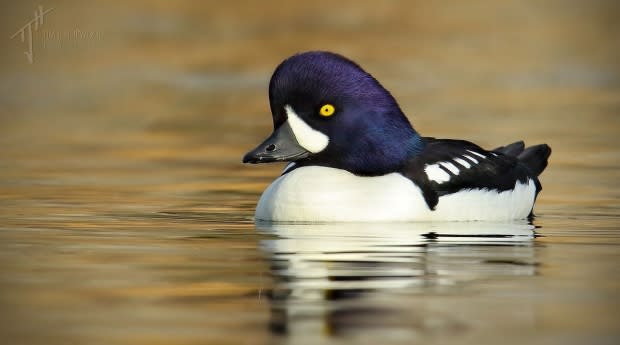How a duck's habits could help better understand the environment

Naturalists and birders were out across New Brunswick this weekend for the annual bird count.
But they were also keeping their eyes open for a less commonly seen duck — the Barrow's goldeneye.
"It is a bird of concern," said naturalist Roger Leblanc.
He was in Cocagne on Sunday, keeping track of all the Barrow's goldeneyes he saw.
"It's not well known, as other birds are easier to follow," he said. "These are in the water, they're in the sea … it's not easy to follow them."
Second survey
This is the second survey of the Barrow's goldeneye that Nature NB has conducted in the province.
Vanessa Roy-McDougall, executive director of Nature NB, said the bird is of special interest.
"Their populations are rather small on the Atlantic Coast and we want to find out where in New Brunswick they hang out and when they hang out," she said.
Barrow's goldeneyes nest in the Arctic. At the beginning of winter, several hundred of them make their way to New Brunswick, but it's hard to know how many, said Leblanc.
"If we want to do some conservation, the first thing you've got to know is what do you want to conserve and how to conserve it," he said. "You have to know how it lives, where it lives, what it's doing."
Helping scientists
Learning their patterns, and how they're changing, will help scientists understand more about what's happening in the environment, said Roy-McDougall.
"Seabirds are a really great indicator of climate change because they travel based on lots of different factors," she said. "Whether it gets colder or warmer, that could influence when they go back up north and when they come down here."
Nature NB will share their findings with the Canadian Wildlife Service among other organizations.
Two more counts will take place later this winter.

